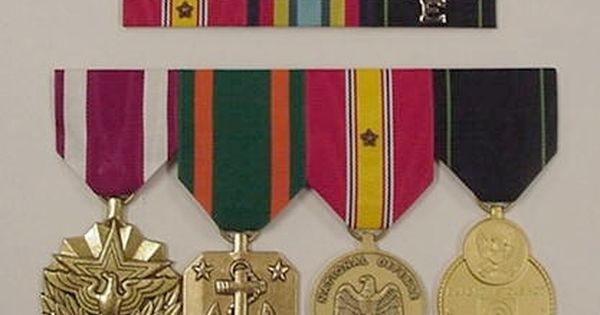Whether you’ve personally served and earned a myriad of medals and ribbons yourself or you’re a history buff collecting an assortment of military-related memorabilia, it can be a challenge to find exactly what you’re looking for when displaying or sharing military decorations. With the various branches, color-codings, and sizes, finding the correct ribbons and racks takes a bit of research and finesse. Here are just a few things that might help maintain and exhibit your military thin ribbons.
What is a Thin Military Ribbon?
Also known as service ribbons or ribbon bars, thin military ribbons are multi-colored ribbons mounted on slim bars worn by officers or other military personnel when medals are not appropriate or possible. Each country and each branch of the military has its own specific rules for which ribbons can be worn and in which order. Generally, these regulations can be found in a corresponding “order of precedence” guide.
For the US military, ribbon bars should be 35mm by 9.5mm, with a 0.8mm thickness. In general, the thin ribbons will match the colors and patterns of the suspension ribbons attached to the medals they represent; however, some distinctions are awarded with solely a thin ribbon. The colors used for ribbon bars must also be an exact match to the shades specified by the US government as laid out in Federal Standard 595, which is the code for the colors used for government procurement.
How Can You Display Them?
Thin military ribbons were designed as a way to identify and represent various achievements and distinctions in uniform. They are meant to be worn when full formal or parade dress is not possible, for example in combat or in working clothes. Some countries use pin backings or other fasteners for their ribbon bars, others simply sew the ribbons directly onto the uniform, but the US has adopted the use of a single metal bar onto which the thin ribbons are lined up and worn similar to that of a brooch.
In general, the ribbons are lined up and worn on the left side of the chest; however, there are some circumstances where they should be worn on the right, such as ribbons that are commemorative in nature or those which belonged to a relative who has since passed. When displaying military ribbons, it is customary to place the ones of highest status towards the top of the display, with foreign decorations commonly found in the bottom row.
Building a Rack
Whether you want to position your ribbons on your uniform or in a display case, you’ll need a rack on which to place them. There are many resources online for customizable racks that you can size according to the number of ribbon bars you have. There are often additional options with rack-building sites, such as magnetic backings, different alignments, etc. Be sure to use a reputable company when designing and purchasing in order to ensure they follow the necessary military codes and standards.
For those of you who are into phaleristics (or the study and collection of military ribbons) or else if you’re officially out of uniform, you can also build racks specifically designed for display cases. There are options available for thin ribbons, medals, and coins in the form of shadow boxes, plaques, and other case types. However, it is worth keeping in mind that even if your ribbons will no longer be on an active duty uniform, their placement should still follow the appropriate regulations.
Military ribbons are a source of honor and pride for many people around the world, and they should be displayed with precision and care. While it might seem overwhelming at first, there are many resources out there to help ensure your decorations are in order and professionally displayed for you and your country to view with pride.
